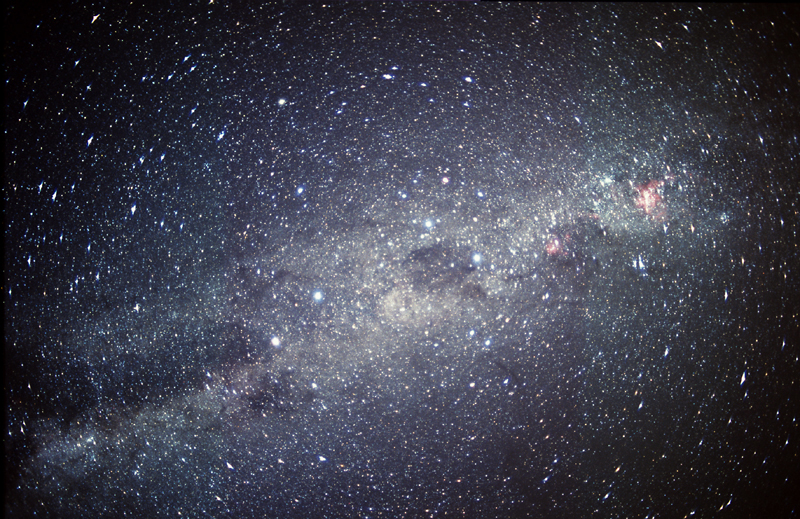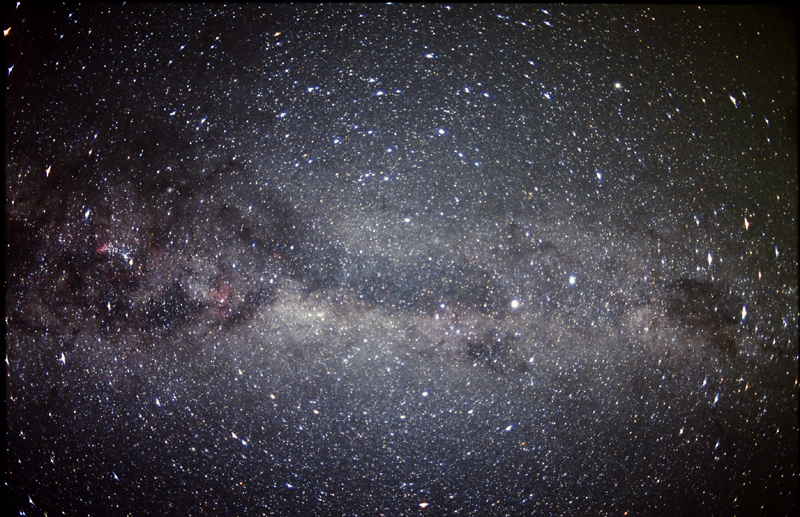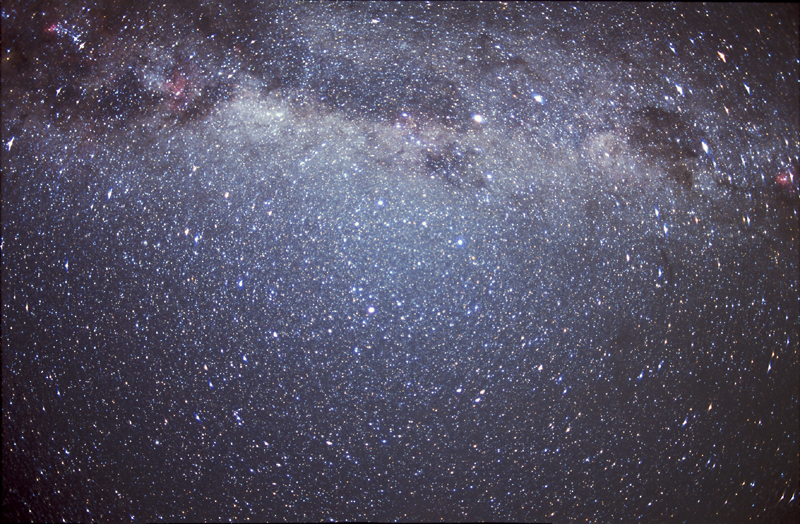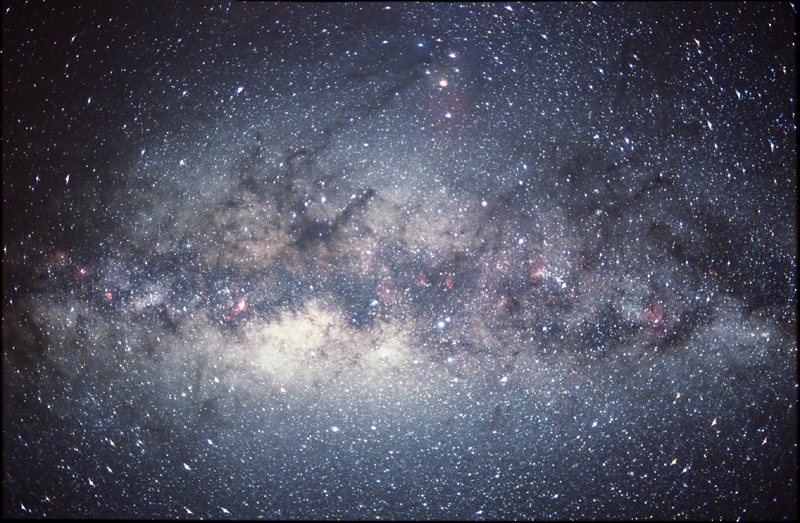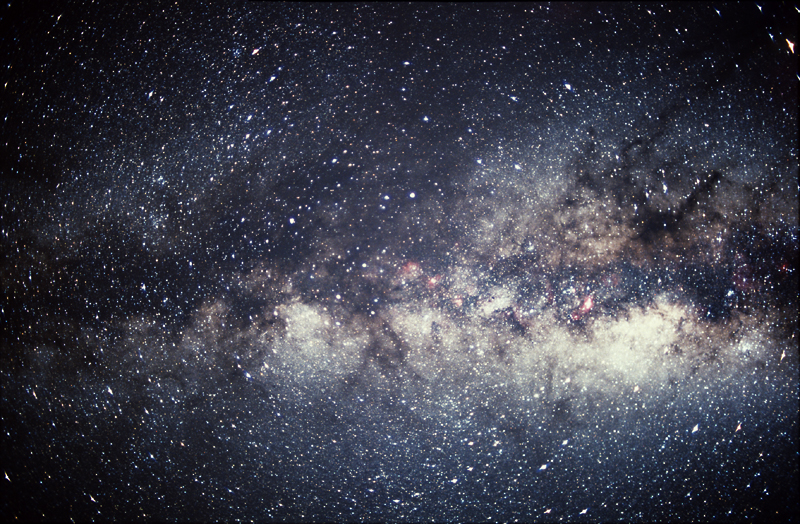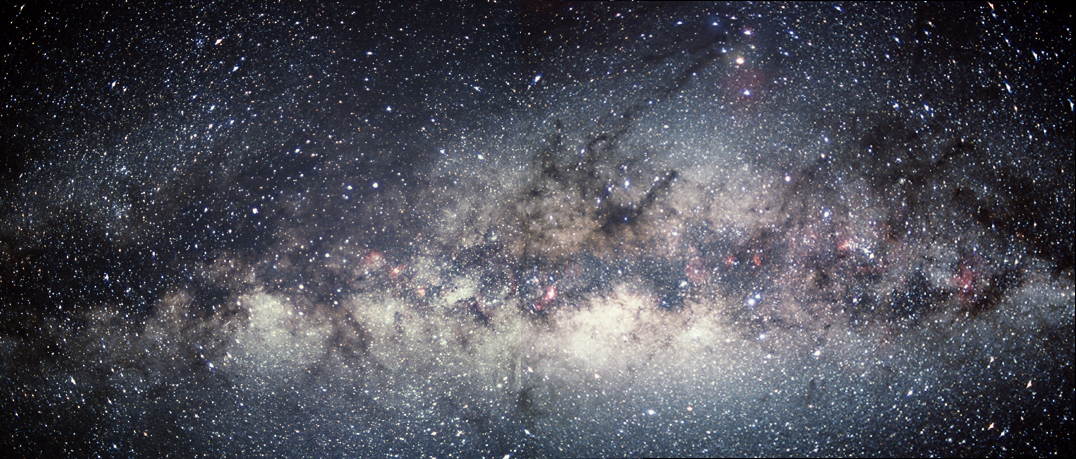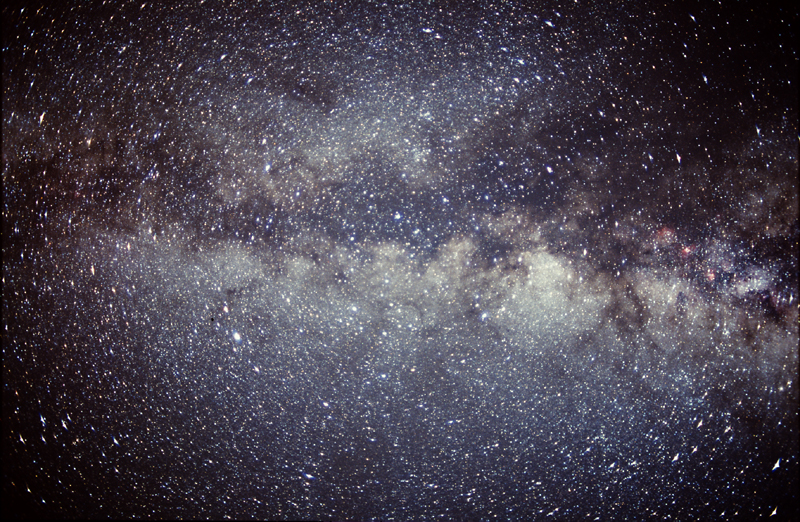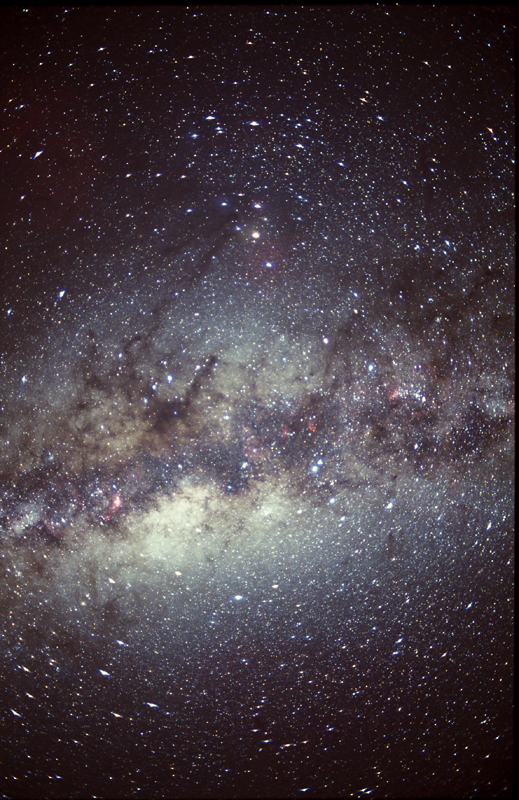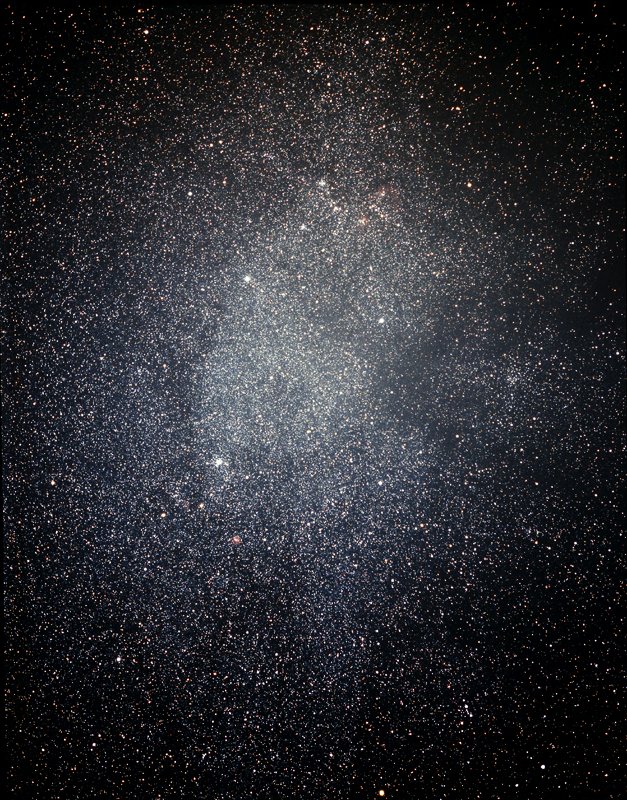
The Milky Way from the southern hemisphere during winter is unforgetable! Towards midnight during July and August, the Milky Way starts from the south-western horizon in Puppis, then passes through Vela and the rich star-fields of Carina and the Southern Cross, on through Centaurus and Norma, to the unrivaled richness of the galactic centre in Scorpius and Sagittarius, which are almost overhead. Passing Sagittarius, the Milky Way passes through Scutum and Aquila before reaching Cygnus, just above the northern horizon. From a dark site this vista is stunning, with the region around Scorpius and Sagittarius being so bright that it has sometimes been seen to cast shadows! The following series of images trace the path of the Milky Way visible from Australia, starting at Auriga and finishing at Cygnus. Most of the images were taken with a 120mm f/2.0, wide-format Minolta lens. A variety of films were used. Ektachrome 200 and 400, Agfa HDC 400, and Fuji Super G 400. Exposures mostly were 30 minutes. The images are arranged such that RA is increasing from top to bottom so that it is easier to follow the Milky Way from one image to the next. There are numerous bright deep-sky objects visible, far to many to enumerate. You can find links to many of them however, by going to the "Constellations" page and clicking on the relevant constellation.

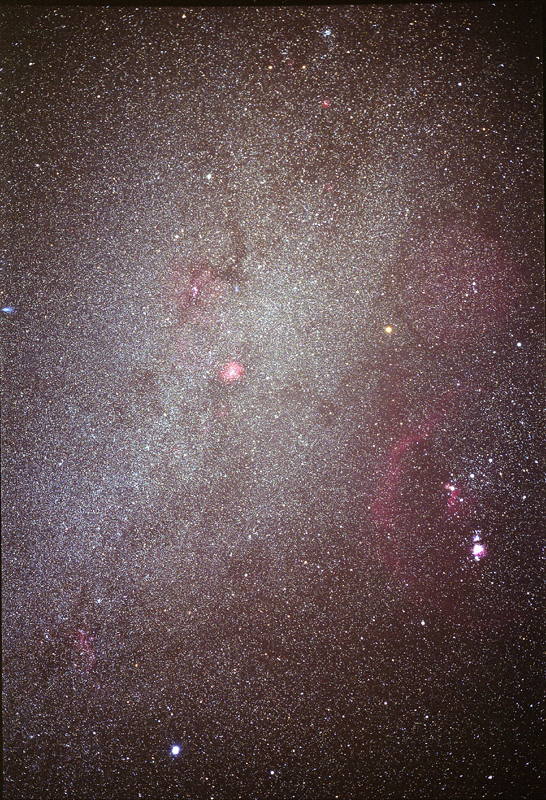
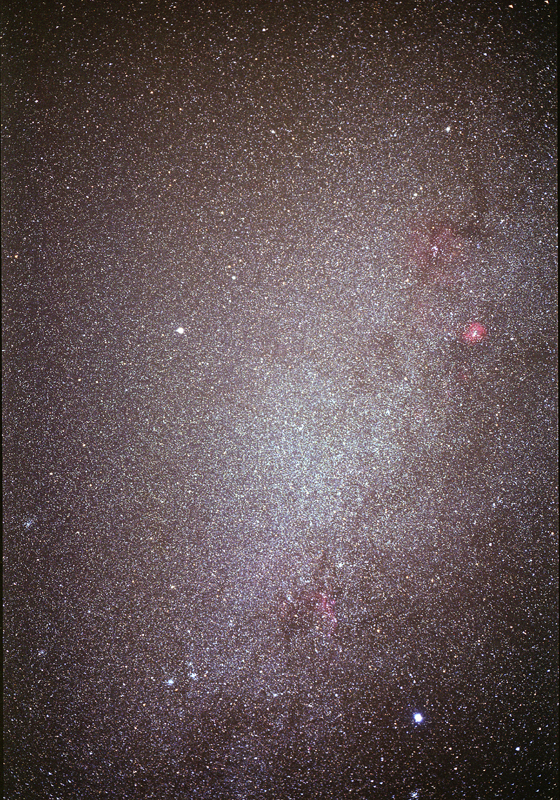
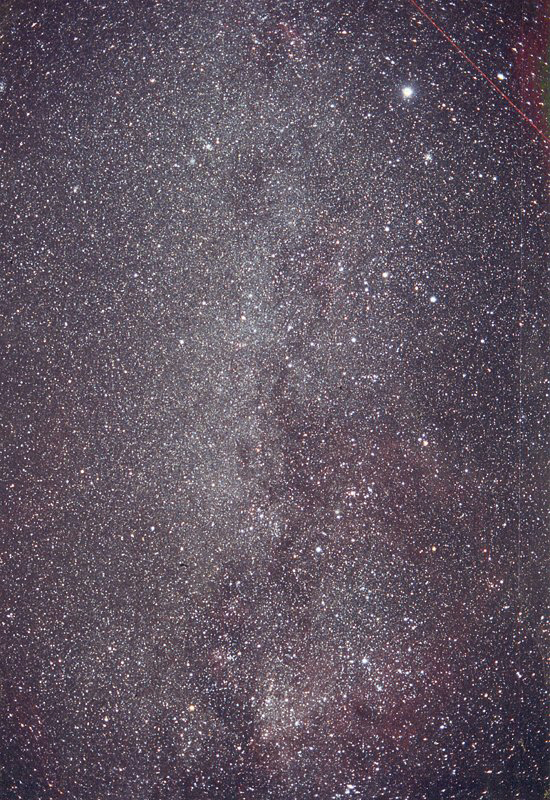
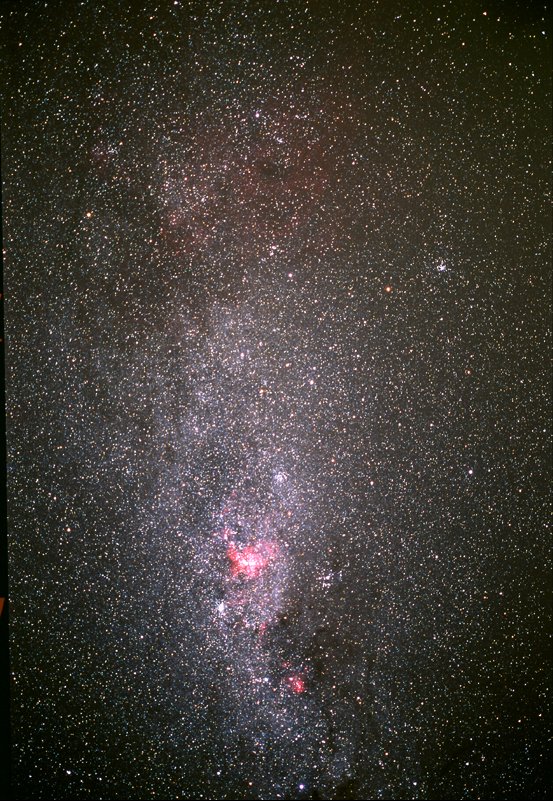
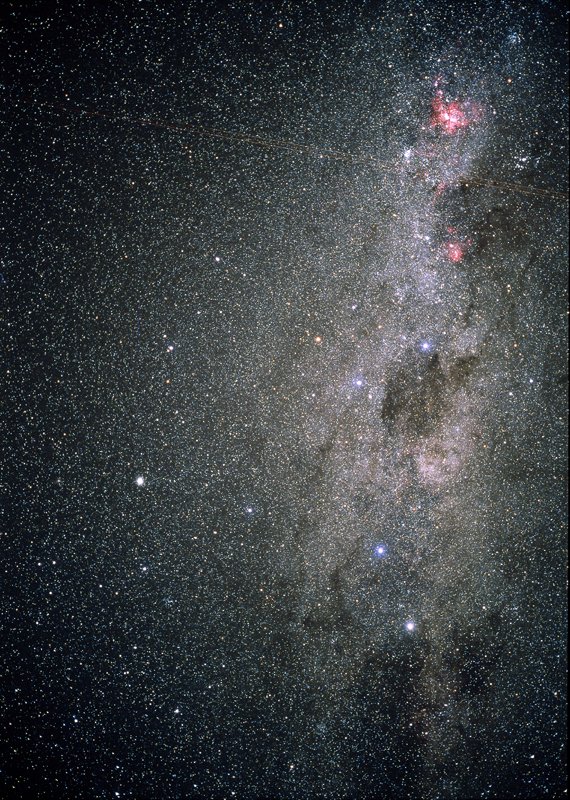
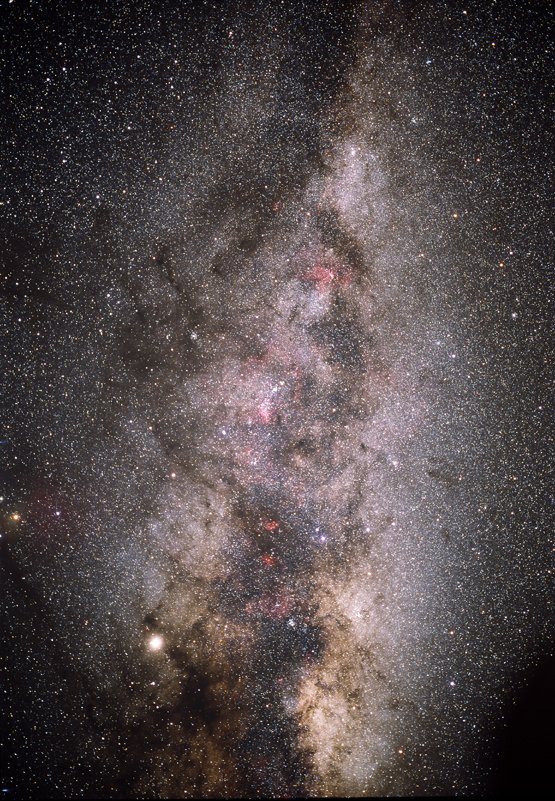
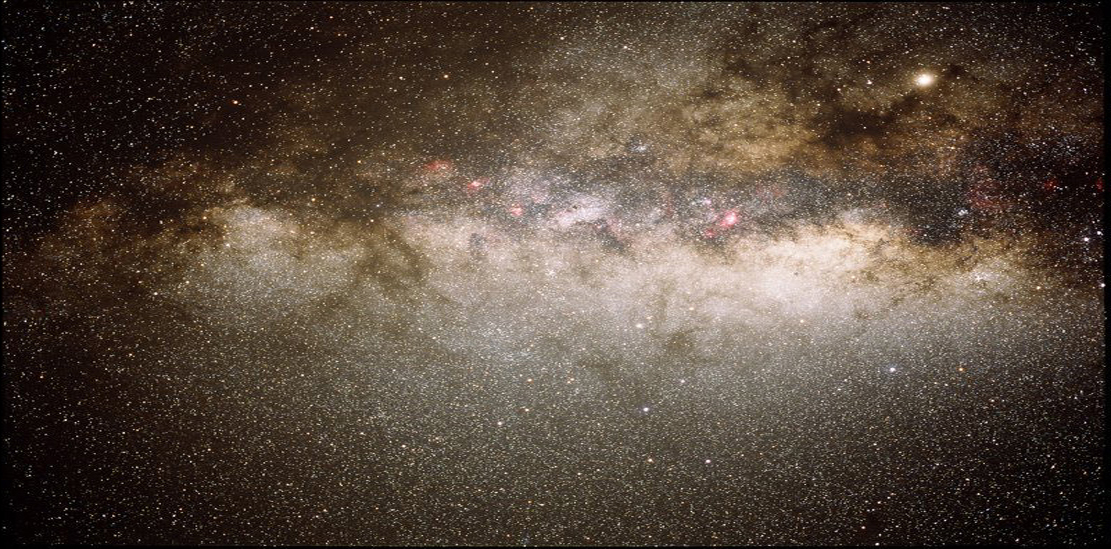
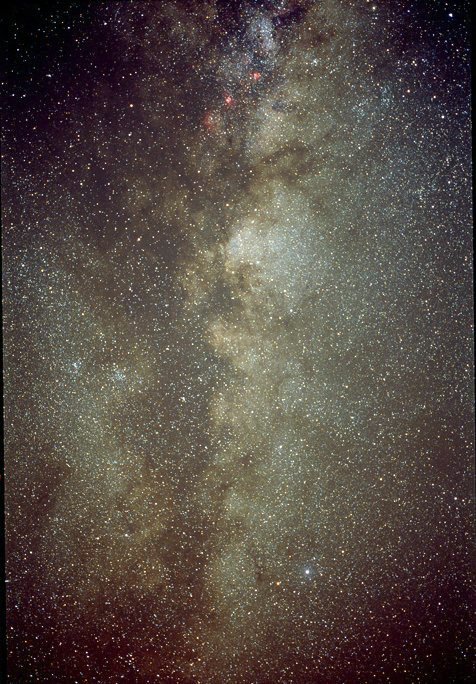
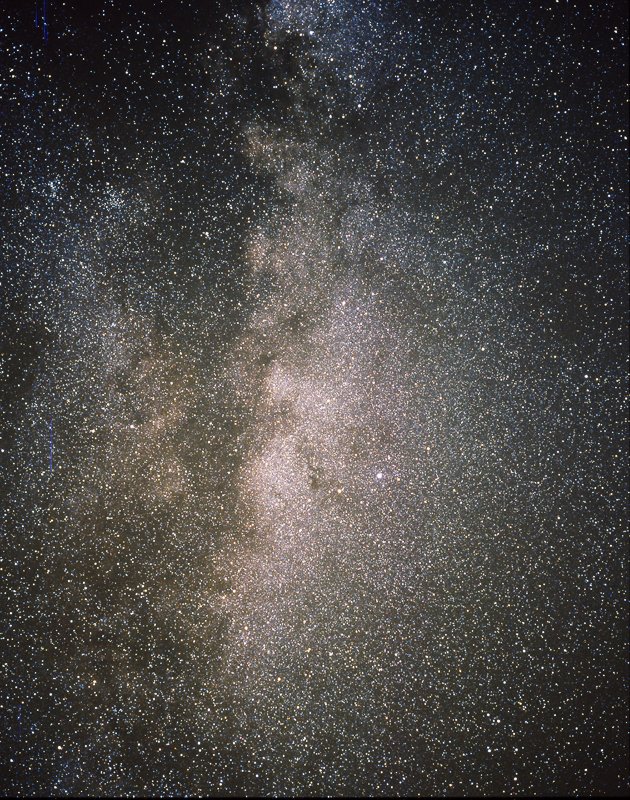
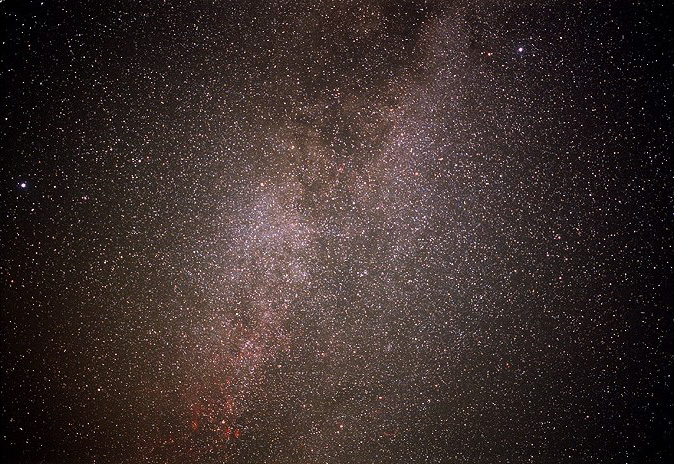
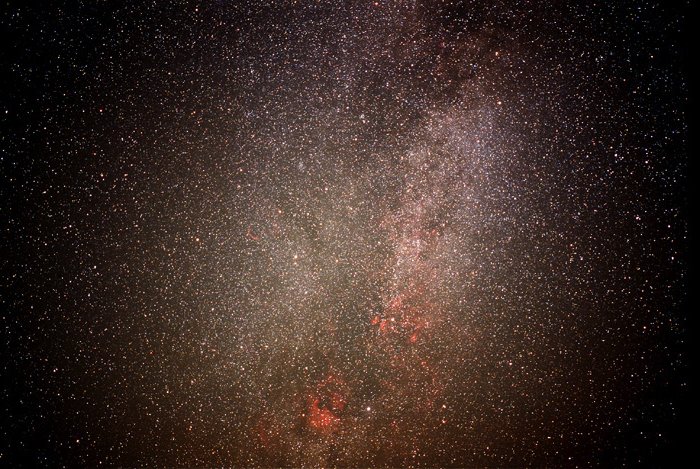
Wide-Angle Images
On one occassion I had the use of a Nikkon 28mm wide-angle camera lens, so I decided to try photographing the Milky way with it. The results were not too bad, although some were taken at f/2.8, and these showed considerable distortion towards the edges. For others, I stopped the lens down to f/4, however even these showed some image distortion.
